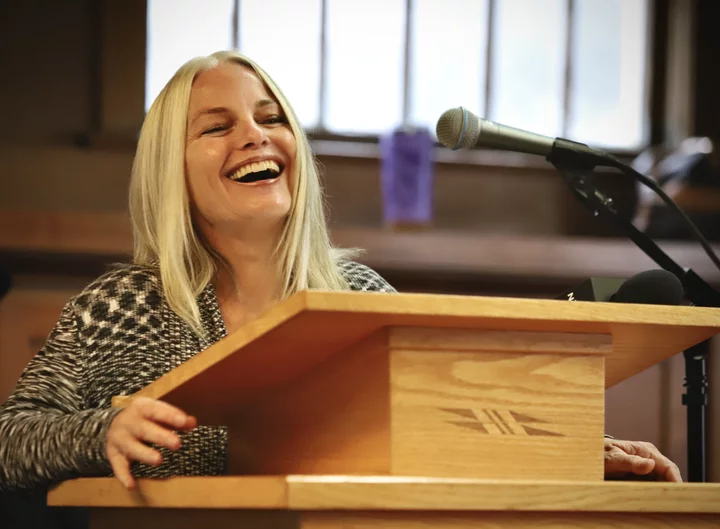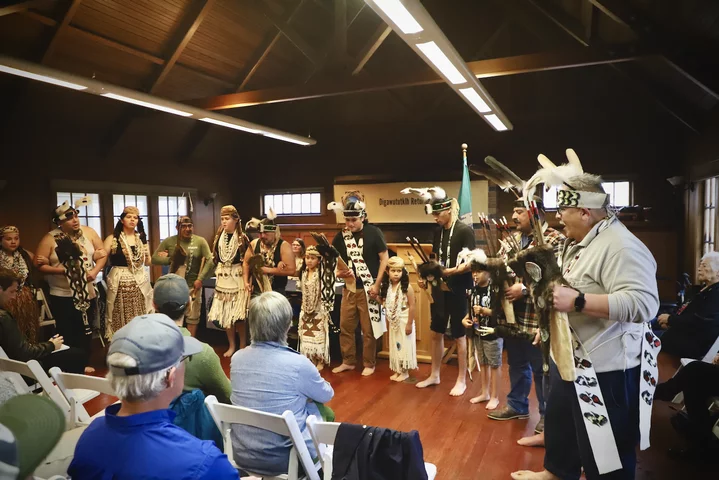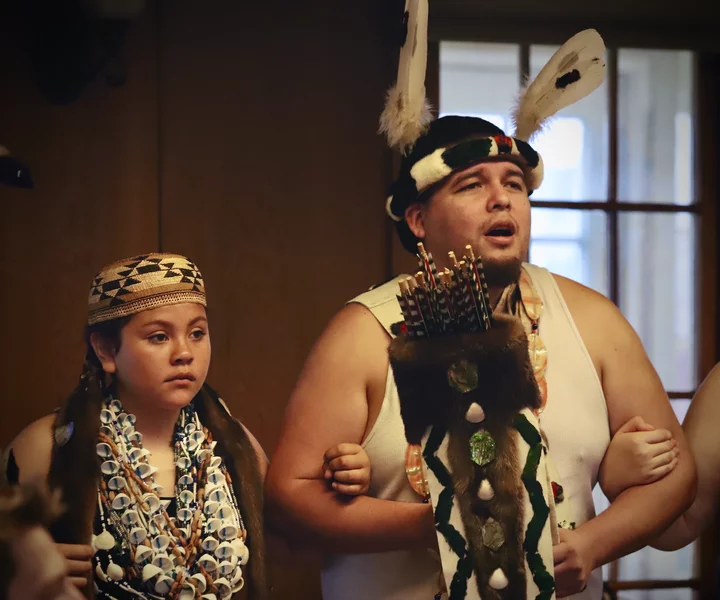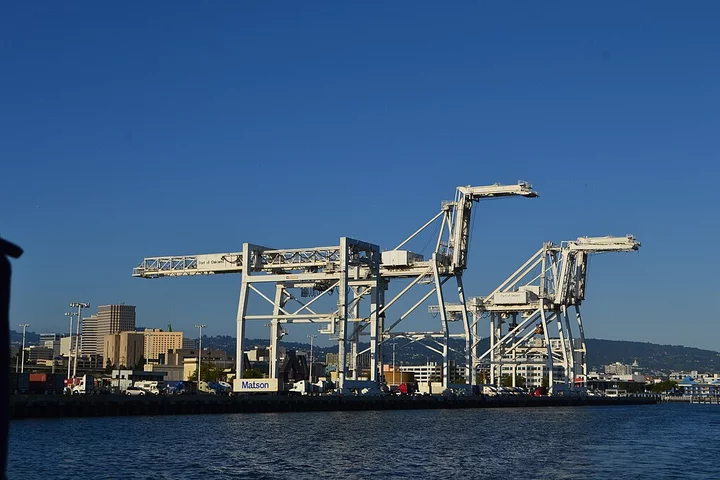OBITUARY: Stacy Yates, 1954-2024
LoCO Staff / Thursday, Nov. 14, 2024 @ 6:56 a.m. / Obits
Stacy
Yates, born August
1954, left us for the stars unexpectedly the night of November
3, 2024.
Tay was loved deeply by her two daughters, Courtney (Steve) and Tana (Nik), and her four grandsons, Trevor, Camron, Jasper and Weston. She was the glue of our family. She’s held us all close for all her years. She was a selfless woman who would help anyone who needed it. She opened her heart and home to many of her daughters friends over the years and was a surrogate mother to many. She’s changed so many lives with her heart, and was a safe haven for people. She also opened her heart and home to the many (many) animals her daughters brought home over the years. A stray cat her oldest brought home became her favorite child, a silver tabby, Jericho. He was her baby and she treated him as such, spoiled rotten! She was always there for her family and never let us go without. We always knew we were loved and important. She gave all of herself always for her family and made us all the best versions of ourselves we could be. We are proud to have been born to such a strong, beautiful and giving person.
Those who knew her will remember her laugh and wicked sense of humor. She loved fishing out in the bay or ocean, crabbing and abbing, before it was closed. She loved cooking, barbecuing and making jerky in her smoker. Most of all she loved being with her family. We’ll never forget her Christmas baskets of homemade fudge, jams and smoked meats. She had a talent for art, even if she didn’t think it was that great. There were many Halloweens with homemade ghost, bats and witches made from freezer paper and colored in by us kids. There was one year her homemade reindeer decorated the Christmas tree at the Eureka Inn — she was damn proud of that.
She was always ready for a game of Rummy, Crazy Eights or Go Fish with the grandkids. We will forever miss her and we will never be able to fill the hole she’s left in our hearts and lives in leaving. There are so many stories and things we can add about how wonderful of a person our mom was, and her humor — this could go on for pages to create a novel. If you have any great stories of Mom, please share them as we’d love to read them.
Since Mom didn’t want a service we ask, in lieu of flowers or donations, that you take some extra time to hold your loved ones a bit closer and never take for granted a single moment because we are not promised tomorrow.
###
The obituary above was submitted on behalf of Stacy Yates’ loved ones. The Lost Coast Outpost runs obituaries of Humboldt County residents at no charge. See guidelines here. Email news@lostcoastoutpost.com.
BOOKED
Today: 7 felonies, 14 misdemeanors, 0 infractions
JUDGED
Humboldt County Superior Court Calendar: Today
CHP REPORTS
420 Mm101 N Dn R4.20 (HM office): Trfc Collision-Unkn Inj
Upper Bay Rd / Ernest Way (HM office): Live or Dead Animal
Us101 N / Herrick Ave Ofr (HM office): Assist with Construction
ELSEWHERE
RHBB: New Fire Ignites off Alderpoint Road Near Garberville After Earlier Series of Starts Nearby
RHBB: Multiple Fires Along Redwood Drive Between Garberville and Redway
Fishing the North Coast : California Fish and Game Commission Increases Fishing Opportunities for the 2025 Recreational Groundfish Season
Fishing the North Coast : Weather Window Opens for Tuna
(PHOTOS) Digawututklh Returned: Friends of the Dunes Transfers 357 Acres of Samoa Dunes, Wetlands to Wiyot Tribe
Isabella Vanderheiden / Wednesday, Nov. 13, 2024 @ 4:37 p.m. / :) , Tribes
“A symbolic signing.” Friends of the Dunes Executive Director Suzie Fortner and Wiyot Tribal Chairman Brian Mead sign a symbolic document during the land return ceremony. | Photos by Andrew Goff.
###
Nearly 360 acres of coastal dunes and wetlands are back in the hands of the Wiyot Tribe.
Tribal leaders, local elected officials, environmentalists and other noteworthies gathered at the Samoa Women’s Club today to celebrate the long-awaited return of Digawututklh [pronunciation], formerly known as the Samoa Dunes and Wetlands Conservation Area, a 357-acre swath of sand dunes, maritime forest and seasonal wetlands on the Samoa Peninsula. The land return ceremony featured speeches from numerous local leaders, as well as songs and dances from Wiyot Tribal members.
Wiyot elder Cheryl Seidner sings a traditional Wiyot song.
“As Dr. Martin Luther King Jr. said, ‘Keep your eyes on the prize,’” said Cheryl Seidner, a former Chairwoman of the Wiyot Tribe. “And that prize is for all of us to see the [return] of the land that was taken away from us.”
Friends of the Dunes has spent the last 25 years working with the Humboldt Bay Harbor, Recreation and Conservation District, the Wildlife Conservation Board, the California Natural Resources Agency, the California State Coastal Conservancy and others to acquire the peninsula site, also known as Dog Ranch, for long-term conservation management. In 2005, Friends of the Dunes secured the funding needed to purchase the property but those plans were stymied when Eureka businessman Rob Arkley swooped in at the eleventh hour to outbid the non-profit.
The property was listed for sale in 2014 and eventually sold to a coalition of local and state conservation groups. Friends of the Dunes assumed temporary ownership of the property in October 2020 with the goal of transferring the property for long-term management.
Wiyot Tribal Chairman Brian Mead.
“Today, we celebrate the return of Digawututklh,” said Wiyot Tribal Chair Brian Mead. “Traditionally, the Wiyot people lived along the Samoa Peninsula. This area was a place where we gathered food … caught surf fish and dug plants to feed our families. The forest here is peppered and plants that we traditionally use for our culture. … We hope to restore this place and return to our cultural practices.”
Friends of the Dunes board member Carol Vander Meer speaks to the audience.
“Friends of the Dunes has been involved in protecting this site for more than 30 years, but that pales in comparison to the generations of Wiyot who have had a relationship with this land, which is now being returned,” said Friends of the Dunes board member Carol Vander Meer. “We pledge our support in whatever ways are helpful to the Tribe, be that in assisting with guided walks, securing funding for ongoing stewardship or collaborative work days. We would be honored to play a supporting role in ensuring that this place continues to be revered and protected and enjoyed for generations to come.”
Fourth District Supervisor Natalie Arroyo embraces Chair Mead.
Humboldt County Supervisor Natalie Arroyo acknowledged that it can be easy to get bogged down by the “bureaucratic stuff” that comes with working in politics, but noted that “this is one of those moments” that makes it all worth it.
“It is incredible to be here and to be able to – not take credit for – but bear witness to and celebrate together what people have spent their entire life working toward,” Arroyo said, her voice wavering with emotion. “This is one of those moments.”
Eureka Mayor Kim Bergel.
Eureka Mayor Kim Bergel briefly spoke about the historic return of Tuluwat Island, which was approved by the Eureka City Council in 2019, and the importance of the Land Back Movement.
“Why land back? Because it’s the right thing to do,” Bergel said. “To be able to witness this here today, and to be a part of that in the past has been a real, a real blessing to me. … Hopefully, the healing will continue and we’ll move forward.”
Keep scrolling for more pictures of today’s land return ceremony.
###
###
PREVIOUSLY:
- Friends of the Dunes Temporary Management of 357 Acres of Samoa Dunes, Wetlands and Coastal Forest; Organization Looking Outside to Determine Permanent Ownership of Dog Ranch Property
- Harbor District, Friends of the Dunes Develop Agreement With Security National to Acquire Oceanfront Dog Ranch, Conservation Group Announces
- “Buying binge reflects his vision, Arkley says,” NCJ, April 28, 2005
Sheriff’s Office Investigating Apparent Electrocution Death at the Blue Lake Power Plant
LoCO Staff / Wednesday, Nov. 13, 2024 @ 4:09 p.m. / News
Press release from the Humboldt County Sheriff’s Office:
On Nov. 2 at about 6 p.m. Humboldt County Sheriff’s deputies were notified by citizens that a deceased body was discovered at a power plant in Blue Lake on Taylor Way.
Deputies responded to the scene and launched an immediate investigation with the Humboldt County Coroner’s Office. The initial investigation indicates that this was possibly an accidental electrocution.
Due to the nature of the decedent’s body and state of decomposition, the Coroner’s Office is working to identify the person. If anyone believes they may know the identity of this deceased male, please call the Coroner’s Office at (707) 445-7242.
This case is still under investigation.
Anyone with information about this case or related criminal activity is encouraged to call the Humboldt County Sheriff’s Office at (707) 445-7251 or the Sheriff’s Office Crime Tip line at (707) 268-2539.
Does Anyone Know Who is Shooting at Homes on This One Street in Pine Hill?
LoCO Staff / Wednesday, Nov. 13, 2024 @ 2:35 p.m. / Crime
Press release from the Humboldt County Sheriff’s Office:
On Nov. 12 at about 11:55 p.m., Humboldt County Sheriff’s deputies were dispatched to the 4900 block of Alto St. in Eureka for the report of shots fired at a residence.
The Sheriff’s Office is currently investigating a similar incident that occurred on November 6, 2024. In both incidents, an unknown suspect shot multiple times into dwellings on Alto St. The Nov. 6 incident occurred in the 4800 block, and the Nov. 12 incident occurred in the 4900 block of Alto St. Spent bullet casings were found on scene upon initial investigation at each incident.
Both incidents are currently under investigation, and the Sheriff’s Office is working to determine if there is any connection between the two. There were no reported injuries in either incident, only property damage.
Anyone with information about this case or related criminal activity is encouraged to call the Humboldt County Sheriff’s Office at (707) 445-7251 or the Sheriff’s Office Crime Tip line at (707) 268-2539.
Sheriff’s Office Makes Arrest in Months-Old Attempted Murder Case; Two More Suspects Still Being Sought
LoCO Staff / Wednesday, Nov. 13, 2024 @ 2:21 p.m. / Crime
Press release from the Humboldt County Sheriff’s Office:
On April 13, 2024, deputies from the Humboldt County Sheriff’s Office (HCSO) responded to a reported robbery and attempted homicide in the 3500 block of Newberg Rd. in Fortuna. The victim was robbed at gunpoint, shot in the shoulder, and severely assaulted, sustaining serious injuries to his head and face.
Over the past several months, HCSO investigators and agents from the Humboldt County Drug Task Force (HCDTF) have conducted an ongoing investigation into this robbery, following up on leads with assistance from community members and evidence gathered at the scene. All three suspects have now been identified, and one arrest has been made.
Jackson Parrott, 44, of Scotia, has been taken into custody on charges of attempted murder, mayhem, and robbery and is being held at the Humboldt County Correctional Facility. Felony arrest warrants have been issued for Michael Cady, 34, of McKinleyville, and Christopher Overholt, 42, of Loleta, for the following crimes:
- PC 664/187: Attempted Murder
- PC 203: Mayhem
- PC 211: Robbery
- PC 459: Burglary
- PC 182(a)(1): Conspiracy to Commit a Crime
Anyone with information regarding the whereabouts of Cady or Overholt is urged to contact law enforcement immediately.
To provide information related to this or other crimes please contact the Humboldt County Sheriff’s Office at (707) 445-7251 or the Sheriff’s Office Crime Tip line at (707) 268-2539.
Trump Has Promised to ‘End’ Offshore Wind. What Will That Mean for California’s Big Bet?
Julie Cart / Wednesday, Nov. 13, 2024 @ 1:56 p.m. / Sacramento
Image via Humboldt Bay Harbor District.
California’s offshore wind industry could be a casualty if President Elect Donald Trump makes good on his promise to sign an executive order to “end” the offshore wind industry.
He cannot do it with the stroke of a pen. But Trump can deeply wound the state’s next-generation renewable energy source by cutting off funding just as it’s gaining a foothold in the U.S.
California’s offshore wind plans rely on a federal policy that offers billions of dollars in grants, subsidies and tax incentives.
Floating offshore wind farms, which bob in the deep ocean as much as 20 miles from shore, are still not common in U.S. waters. But the technology is well on its way to being deployed in the ocean off California, which is counting on the clean energy source to meet its goals to scrub fossil fuels from the electric grid.
The state’s energy blueprint envisions massive offshore wind farms producing 25 gigawatts of electricity by 2045, powering 25 million homes and providing about 13% of the power supply.
Five offshore wind companies have already paid the U.S. Treasury $757 million to lease five tracts in the deep ocean off Humboldt County and Morro Bay. The hundreds of turbines, each as tall as a 70-story building, would not be visible from the coast but would need infrastructure on land, including port expansions and new transmission systems.
The Biden administration calls the rush to develop this new energy frontier the “Floating Offshore Wind Shot.” But harnessing that power could end up more of a long shot if Trump pulls back federal support.
The industry, which is largely Europe-based, has kept a keen eye on Washington, D.C. politics — cheering when the bipartisan Inflation Reduction Act passed, freeing up federal money, including $100 million for transmission development and a 30% tax credit.
In the wake of Trump’s election victory last week, stock in some offshore wind companies dropped.
Trump vowed to “terminate” the Inflation Reduction Act. But much of the tax breaks have already been claimed and the construction jobs, manufacturing and supply chain development will take place in districts that Republican lawmakers might want to protect.
Offshore wind farms “destroy everything, they’re horrible, the most expensive energy there is. They ruin the environment, they kill the birds.”
— President Elect Donald Trump
Trump has long carried a grievance against offshore wind turbines, a dislike that may have begun with land-based turbines that he said spoiled the seaward view from his golf club in Scotland. He has repeated, many times over the years and at recent campaign rallies, unsubstantiated claims that wind farms cause cancer and environmental damage.
“They destroy everything, they’re horrible, the most expensive energy there is,” Trump said at a rally in May in New Jersey. “They ruin the environment, they kill the birds, they kill the whales.”
Scientists say there is no evidence that offshore wind projects kill whales. Other offshore wind farms around the world have had minimal impact on marine mammals, although they are not directly analogous to the Pacific Ocean’s deep floating platforms. Researchers are examining the potential impacts of increased sound and ship traffic on migration patterns and effects on prey.
“More information is needed to help us better understand the potential short-term and long-term impacts of this industry on protected, threatened, and endangered species, as well as the cumulative effects of these activities on marine mammals in the context of stressors already present in the marine environment,” the federal Marine Mammal Commission says.
Floating offshore wind is at a critical inflection point. Wind developers say they need certainty from state and federal partners that environmental policies will remain in place to reassure investors. That’s no problem in California, they say, where state officials have sent strong signals of support, backed by billions in investments to build power transmission and ports. The industry got a $475 million injection for port infrastructure from just-passed ballot initiative Proposition 4.
“In the next few years much of the work that needs to be done to advance offshore wind will focus on state activities,” said Adam Stern, executive director of the industry group Offshore Wind California.
However, while the federal scaffolding to support the industry is already in place, Stern said, there’s no guarantee that support will remain.
“As an industry we want to work with the new administration to help strengthen the state’s grid reliability, continue to achieve energy independence and create new jobs,” he said. “Those issues ought to appeal to both Republicans and Democrats.”
###
CalMatters.org is a nonprofit, nonpartisan media venture explaining California policies and politics.
Trump’s Proposed Tariffs, Especially on China and Mexico, Could Hit California Hard
Levi Sumagaysay / Wednesday, Nov. 13, 2024 @ 7:42 a.m. / Sacramento
Minette Lontsie, CC BY-SA 4.0, via Wikimedia Commons
A range of experts, from Nobel Prize-winning economists to an internet-famous menswear writer, have a message for Americans who voted for Donald Trump based on his promises to bring down prices: This likely won’t go how you want.
Some voters cited the cost of living as a factor in their decision to elect Trump to a second term as president. But with inflation actually starting to ease, his proposed tariffs, which the president-elect has called the “most beautiful word in the dictionary,” could actually raise prices again.
While some experts don’t think more tariffs are a bad idea, the majority of economists and other experts who spoke with CalMatters echoed 23 Nobel laureates who warned that Trump’s policies would be worse for the economy than the ones proposed by Vice President Kamala Harris. Those economists wrote a letter last month calling Harris’ economic agenda “vastly superior” to Trump’s, and mentioned tariffs as one reason.
“His policies, including high tariffs even on goods from our friends and allies and regressive tax cuts for corporations and individuals, will lead to higher prices, larger deficits, and greater inequality,” the economists wrote.
Businesses that import goods into the country must pay the tariffs. They tend to pass on their increased costs to consumers, with some executives recently promising to do just that during their earnings calls. So economists largely view tariffs as a tax, especially on the lowest- and middle-income families in the nation.
While tariffs could raise prices for all U.S. consumers, California could feel the brunt of the impact in part because of the countries Trump singled out during his campaign: China and Mexico. Those two countries accounted for 40% of the state’s imports in 2023.
“The port and logistics complex in Southern California is a very important part of the economy, and directly tied to the countries he threatened,” said Stephen Levy, an economist and director of the Center for Continuing Study of the California Economy, an independent, private research organization in Silicon Valley.
Trump imposed tariffs during his first presidential term, and President Joe Biden maintained some of them. During his campaign this time around, Trump said he intends to impose tariffs of 10% to 20% on all imports, and has mentioned even higher tariffs on goods from China (60%) and Mexico (100% to 200% on cars).
Such tariffs could exacerbate California’s already high cost of living and raise the prices of cars, technology and electronic products, medical devices, groceries and more. Also, as the state saw during Trump’s first term — which included a trade war, with countries retaliating with their own tariffs on U.S. exports — California’s agricultural industry is likely to feel the effects. Trump’s proposed tariffs could also have an adverse effect on the state’s ports, which are among the nation’s busiest.
And all of those outcomes could have a ripple effect on jobs in the state, including those in agriculture, trade and manufacturing.
What the state’s ports expect
Trade experts say it’s too early to tell how the state’s ports could be affected, though some of them also said they expect a near-term surge in activity as businesses brace themselves for tariffs by importing more goods now.
“Long Beach and Los Angeles are two of the largest ports in the U.S.,” said Jonathan Aronson, a professor of communication and international relations at the University of Southern California, who studies trade and the international political economy. “Their traffic would presumably slow in both directions” if Trump imposes tariffs, Aronson said. Like other experts, though, he wondered if the president-elect is using the threat of tariffs as a negotiating tactic — say, to pressure Mexico into doing more to limit immigration into the United States.
The most recent available data for the Port of Los Angeles, which is the busiest in North America and handles nearly 10% of all U.S. imports, shows that trade activity rose nearly 19% at the port in September from the same month a year ago. September imports totaled $27.9 billion, a 20% increase year over year. There’s a chance those numbers could head the opposite direction as a result of tariffs.
“Significant increases in tariffs, and the possibility of retaliatory tariffs, could have a significant impact on traffic — and jobs — at the port,” said Phillip Sanfield, a spokesperson. “We’re monitoring developments closely.”
“As a West Coast seaport, our primary trading partner is Asia, and what’s happening right now is that retailers are expecting a short-term shipping surge in advance of new tariffs.”
— Robert Bernardo, spokesperson, Port of Oakland
The Port of Los Angeles says nearly 1 million California jobs are related to trade at that port.
The Port of Long Beach handles about 3% of all U.S. imports and has about 575,000 Southern California jobs tied to trade. Chief Executive Mario Cordero said, through a spokesperson, that he is waiting to see what trade policies Trump actually will adopt: “At this point we expect that strong consumer demand will continue to drive cargo shipments upward in the near term.”
The Port of Oakland, whose trade-related jobs at both the airport and seaport number about 98,000, also expects a traffic boost at first. Spokesperson Robert Bernardo: “As a West Coast seaport, our primary trading partner is Asia, and what’s happening right now is that retailers are expecting a short-term shipping surge in advance of new tariffs.”
Mike Jacob is the president of the Pacific Merchant Shipping Association, a not-for-profit maritime trade association whose members facilitate trade. They include ocean carriers, marine terminal operators and more.
Jacob, too, said he is expecting trade activity to pick up ahead of whatever tariffs Trump imposes: “Given the lack of understanding of the timing, scope and scale (of the tariffs), you’re more likely than not to move cargo earlier.”
As a result of tariffs during Trump’s first term, Jacob said there was “a small bump in cargo back in 2019 that resulted in additional impacts on our logistics chain.” He said after that experience, which was then followed by pandemic-related chaos, the industry might be a little more prepared to deal with possible supply-chain disruptions.
Possible effects on manufacturing
The San Diego Regional Chamber of Commerce is worried about potential tariffs on goods from Mexico. Kenia Zamarripa, a spokesperson for the group, said the CaliBaja region — which includes San Diego and Imperial counties and the Mexican state of Baja California — is interconnected, with a multibillion-dollar supply chain. The region’s logistics facilitate 80% of the trade between California and Mexico, she said.
The nation’s top imports from Mexico in September — worth at least $2 billion for each category — were petroleum and coal products, computer equipment and motor vehicle parts, according to the most recent statistics from the U.S. Census Bureau’s Bureau of Economic Analysis.
Some specific products that are imported into the U.S. from Mexico through California include the Toyota Tacoma. The truck and its components are made in Baja California and elsewhere in Mexico. “Imagine taxing each component before it goes to Mexico and back,” Zamarripa said.
She added that the region also leads in producing medical devices, and that the importance of that became apparent during the beginning of the pandemic when “a bunch of companies shut down, not knowing that a little metal piece they were producing was a vital part of a heart monitor, for example.”
Mexico’s economy minister, Marcelo Ebrard, said this week that he would hit the U.S. with tariffs if Trump imposes tariffs, though President Claudia Sheinbaum has seemed more open to negotiations.
Lance Hastings, chief executive of the California Manufacturers & Technology Association, said he’s well aware of the disruption tariffs can cause. When Trump put tariffs on aluminum and steel imports, aluminum prices rose at least 25%, Hastings said. “I was in the beer industry when it was put in, and we felt it,” he added.
Hastings also said the anxiety around Trump’s proposed tariffs stem in part from the fact that “we’re still trying to get the supply chain back to normal” after the pandemic. Because “California is the gateway to Asia, the state would feel the impact of more tariffs first and more than everybody else,” he said.
Made in the USA
Yet there is a bit of optimism among those who think some tariffs could actually help California manufacturers.
Sanjiv Malhotra, founder and CEO of Sparkz, a maker of lithium batteries, said tariffs could benefit his company and the rest of the domestic battery industry amid the increasing popularity of electric vehicles.
Sparkz, which will get its materials from West Virginia and make batteries at a plant in Sacramento, “is all U.S.-sourced. Nothing is coming in from China,” Malhotra said.
During his campaign, Trump indicated he would try to roll back emission-reduction rules and said he would oppose banning gas-powered vehicles. But Malhotra, who served in the U.S. Energy Department under the first Trump administration, said that as demand for lithium batteries grows, he believes Trump’s incoming administration will understand that they “need to be made here in the U.S. so we are not dependent on China for batteries.”
“The port and logistics complex in Southern California is a very important part of the economy, and directly tied to the countries he threatened.”
— Stephen Levy, economist and director, Center for Continuing Study of the California Economy
Kate Gordon, CEO of California Forward, a nonprofit organization that focuses on the state’s economy, said that while it’s important to get back some of “what we’ve lost over the past couple of decades” — the nation once led in solar panels — it “needs to happen deliberately and with attention to where we’re really competitive.”
“What would be terrible would be tariffs on things where we’re no longer competitive, like parts of the solar supply chain, which have been held by China for a long time,” she said. All that would do is drive up prices, Gordon said.
Americans may say they want things to be made in the USA, but they also don’t want to pay higher prices for them, said Derek Guy, a menswear writer based in San Francisco who has covered the clothing industry for more than a decade. A few years ago, Guy wrote about American Apparel, under new ownership, offering U.S. consumers the option of paying a little bit more for clothing made here vs. similar pieces made overseas.
“Even based on a few dollars, when someone wasn’t looking over (their) shoulder, people chose the foreign version,” Guy said.
“A lot of manufacturing in the U.S. has long shifted toward the higher-end,” Guy said. “The kind of cheaper clothes we’re talking about (what most Americans buy) are made elsewhere.” Tariffs would raise those prices.
The price of almonds
California’s top agricultural exports include almonds, wine, dairy products, pistachios and other nuts.
During Trump’s first term as China imposed retaliatory tariffs on the U.S., California exports of wine, walnuts, oranges and table grapes to China fell, according to the University of California Giannini Foundation of Agricultural Economics.
In addition, almond prices sank, with the foundation’s researchers saying prices fell from $2.50 a pound to $1.40 a pound in 2018. That had a negative impact on an industry that generates $4 billion to $5 billion a year and employs about 110,000 people, according to the website of lobbying group Almond Alliance.
Amanda Russell, a spokesperson for the Almond Alliance, said in an emailed statement: “In previous trade negotiations, President Trump demonstrated a commitment to supporting agriculture, and we are optimistic about continuing this partnership to address the challenges and opportunities facing our growers and stakeholders.”
Besides tariffs, another likely action by Trump that could affect the state’s agriculture industry is mass deportations — a threat that has immigrants and advocates on edge.
“I can’t see any benefit to California if he goes through with mass deportation,” said Levy, the economist in Silicon Valley. “Even the threat of deportation will affect the labor pool.”
###
CalMatters.org is a nonprofit, nonpartisan media venture explaining California policies and politics.

















